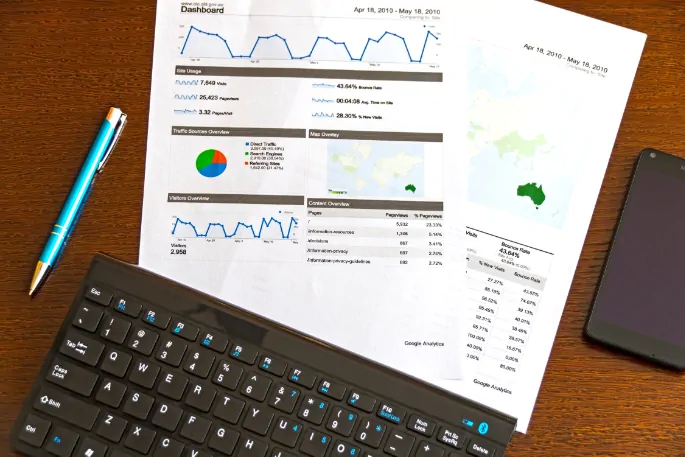Data has become king when it comes to features users seek out in their apps. While data analytics are increasingly commonplace in the back-end—most companies already use business intelligence heavily—the user side is starting to catch up. It’s equally important for business users to understand how successful their email campaigns are, for instance, as it is to successfully launch and manage them.
For app developers, this means creating apps that can provide a more comprehensive experience—not only a service but also a way to measure and understand its performance.
Including app analytics delivers great added value, but it poses a dilemma for developers. On one hand, they can build an analytics suite themselves. This is no easy feat, and the complex process has some drawbacks, but it’s still tempting. On the other hand, developers can opt for embedded analytics, which can be easier to implement but offer some limitations.
With user analytics no longer an optional feature, which way your team goes to integrate them could have a large impact on your success.
Making Your Own Analytics
Choosing to build your own analytics engine affords some important benefits, but it comes with a significant price tag. Perhaps the biggest advantage is that you’re building a system that is perfectly tailored to your app ecosystem. No one knows what data your app produces and how to analyze it better than your team, and this lets you present your customers with the ideal service. In fact, 93% of users in one survey reported improved user experiences thanks to analytics.
Additionally, keeping everything in-house means you have full control over every aspect—security, data streams, updates, and more. In theory, building your own analytics solution is simply another step in the dev process. However, the reality is that building analytics requires an entirely unique skill set that your team simply may not have, no matter how skilled in NoSQL and other databases they may be.
Proper analytics suites usually require the expertise of data scientists, analysis experts, and developers who specialize in building statistical modeling tools. While most teams may have talented Python developers, integrating your app code with your data warehouse is not a common skillset. This means that if you’re building analytics from scratch, you’ll have to work much harder for a product that may not have all the features you need, which may cost too much to deliver any real value, or which may quickly incur significant technical debt.
Embedding Analytics
The other side of the coin offers its own set of benefits, and in many cases, these are enough to make it a smarter choice. Embedding analytics simply means using pre-built suites and libraries that you can integrate directly into your app and customize to fit your needs. Instead of building an analytics platform from scratch, you could, for instance, embed Sisense or another high end SDK based embedded solution like Reveal into your app and use it to provide data capabilities.
The clearest benefit to this approach is time. For one, you don’t have to drain any resources from your priority tasks—building the best possible user experience—to craft an analytics engine that offers added value. Moreover, most embedded analytics suites provide significant degrees of customizability, so you can construct platforms that are suited to your organization’s needs.
Indeed, embedded analytics has proven to be a positive in more ways than one. The study mentioned above also found that 96% of app developers see embedded analytics as improving revenue growth, and 94% believe it has improved customer satisfaction. It matters to users, too, as 67% of companies reported users spending more time in their apps once they integrated embedded analytics.
A Hybrid Approach
Regardless, seeing the decision as a binary one is unrealistic. Even when you choose to embed tools, you’re not simply buying a ready-made, perfect solution for your company. As with most technology rollouts, the process requires time and some effort (although less than building from scratch), but it also takes some patience.
You’re not simply joining a new subscription service, but integrating a complex analytics tool into your existing app, which may require fine-tuning, evaluation, and multiple attempts to get just right. In this sense, you become somewhat reliant on your embedded analytics provider—they know how to adapt their product best. However, you’re not totally helpless. Most of today’s embedded analytics suites let you customize their environments to your needs without their assistance.
While your team may not be data scientists or analytics experts, modifying interfaces and making other changes is much more straightforward.
In addition, you’re still saving your resources, as your maintenance is handled by your provider, liberating your team to do the work that matters most to your organization. Consider embedded analytics as a collaborative process, letting you both build and adapt to create something that is perfectly suited to your organizational and users’ needs.
Embedding Away
Embedded analytics solutions are only going to become more central to app developers as consumers demand to know more about their performance.
By finding a solution that matches your needs, you can build an app and deliver an experience that is purposefully designed to keep your users engaged all while delivering them real value.








